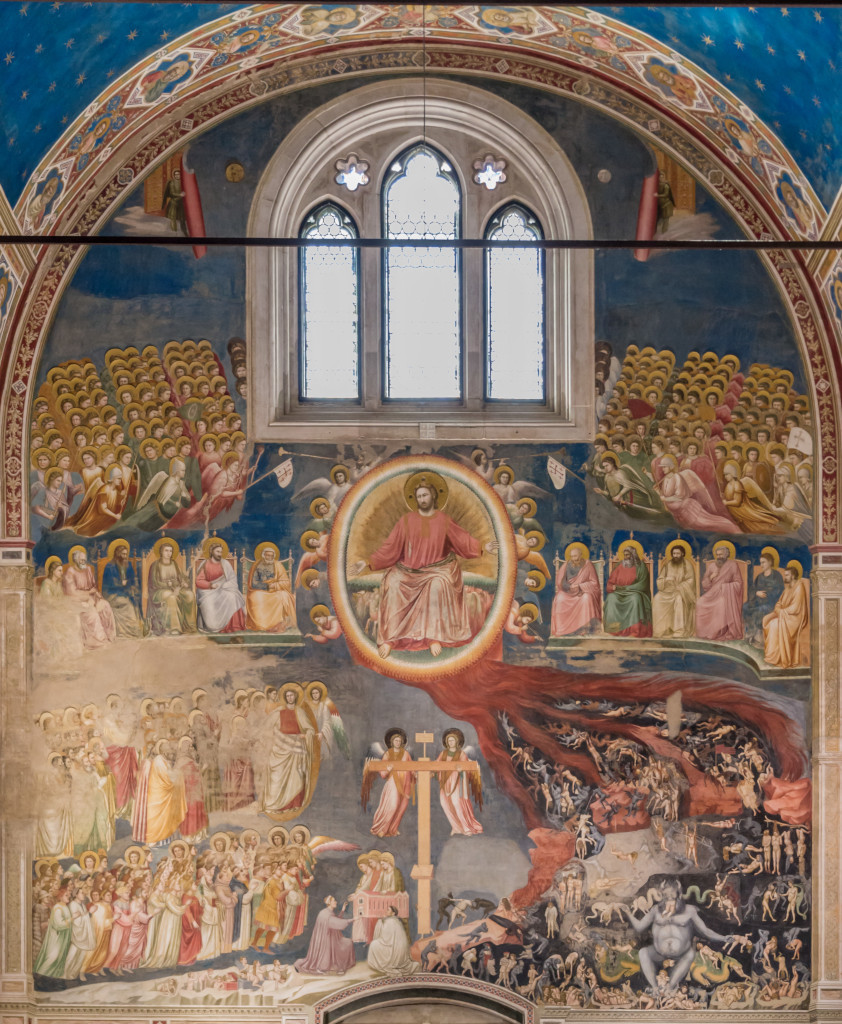Looking at artists and
artifacts of the Renaissance period this week, I focused on Sandro Botticelli
(1444-1510), a well-known painter of the period. Close to Lorenzo de Medici,
Botticelli produced paintings both adherent to classical naturalism, yet
particularly imaginative in execution (Zophy 90). He was later influenced by the Dominican
friar, Savonarola, who stressed an apocalyptic vision (pbs.org). Therefore, I
chose to examine a later painting of Botticelli, one that likely reflects the
intertwining concerns of apocalypse with the matured style of the Renaissance
master.
“Mystic Nativity,” as
it has been named, was painted by Botticelli in 1500, likely for a patron in
Florence (nationalgallery.org). The image is first and foremost intriguing for
the combined spiritual themes of both beginning (Jesus’s birth) and end
(Revelations). The painting maintains Renaissance conventions of style- the
symmetrical nature of figures and landscape, the emotive facial expressions of
the figures, an overall naturalistic portrayal and a classical approach to
nature/beauty. In the painting, Mary
appears as the central figure, kneeled over Jesus, while Joseph is more
secondary, even turned away from the viewer’s perspective. The angels located
near the earth almost appear as interlopers within the scene, interspersed
amongst those who have come to visit the baby Jesus. Three angels perch on the
roof, while the large rip or opening in the sky appears both contradictorily
peaceful and looming at once. Additionally, the cave-like rock surrounding the
small hut could be indicative of Jesus’s resurrection as well. Moreover, demons
crawl in the very foreground where the darkest spots (light-wise) lurk in the
painting. Consequentially, Botticelli may be rendering time as circuitous,
rather than straightforward. On the other hand, the painter may have felt the
forthcoming apocalypse to be an immediate danger, narrowing the timeframe from
Jesus’s birth to the end of the world. Either or, the painting holds some
chaotic urgency, even if remaining true to the stylistic importance of nature
and order. In effect, the painting feels more questioning than frightening,
blurring lines of reality even in a naturalistic style. Therefore, the painting
lends a crucial understanding of the Renaissance period itself: the desire for
order, for a rebirth of classicism, for perfection in figure, expression- all
relate to underlying reactions to a somewhat chaotic, changing Renaissance
world, one that sometimes resulted in beautiful manifestations of fear.
Zophy, Jonathan W. A Short History of Renaissance and Reformation Europe. Pearson Prentice Hall, 2009.

